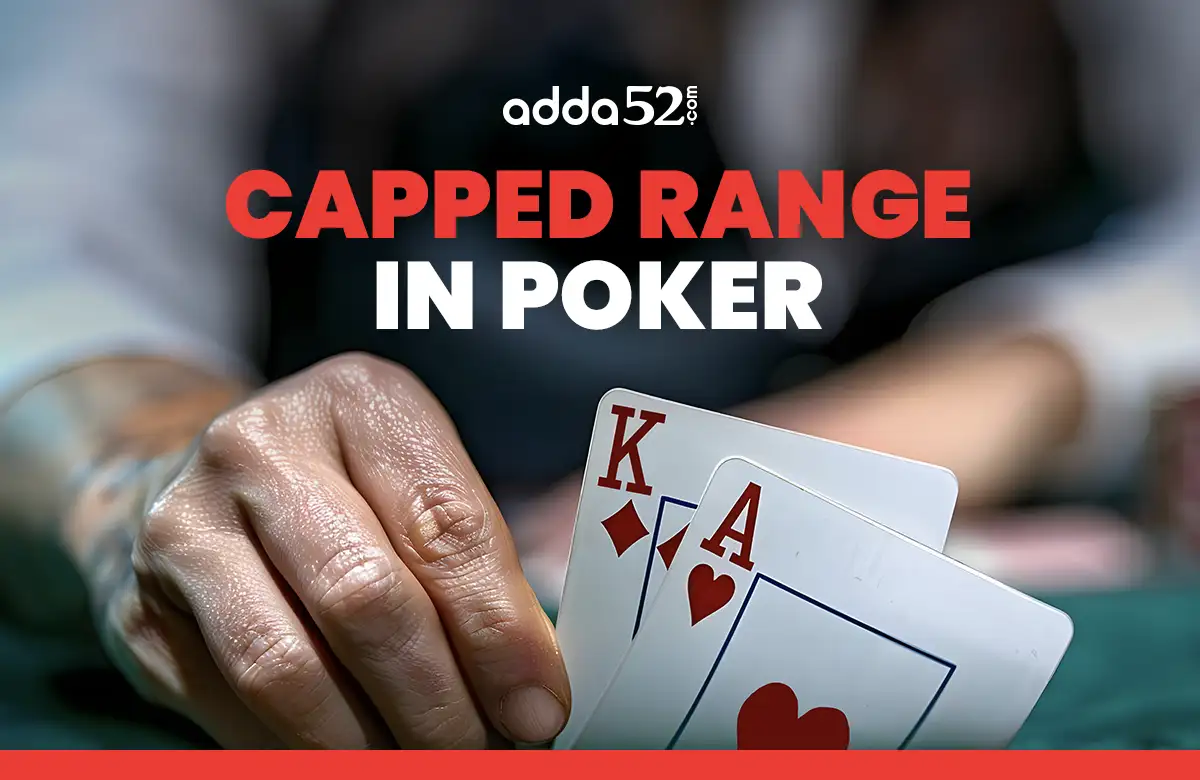
Introduction
As poker players, we always want to know whether our opponents have strong or weak hands. If only we knew how strong our opponent's cards were. What if I tell you there's a way you can figure out the strength of your opponent's opponent's hands?
You can tell if your opponent has top pairs or some random weak cards. The solution is called the Capped range. Don't worry—we will explain everything you need to know about it.
Objective
The blog aims to explain the capped range and its importance.
What is a capped range?
A capped range is a range of hands that does not have the strongest possible hand. When players start taking actions like calling or checking instead of betting or raising, this indicates that they don’t have a premium hand.
For example, if your opponent is calling instead of raising, they have weak hands in a pre-flop. Similarly, if the flop has K-Q-10 and your opponent checks. Their range might be capped.
Why do capped ranges matter?
Capped range helps you strategise your gameplay. Here's how and why capped range matters in poker:
- Knowing that your opponent's hand is capped, you can bet aggressively and force them to fold. You can bet small hands with medium strength or large bets to put pressure on them.
- The capped range also helps you analyse your and your opponent's hand strength and make calculative decisions.
- You can bluff easily. This goes both ways. If you know your opponent's hand is capped, you can bluff and raise it to make them fold. If you have capped hands, you can still bluff and make your opponents think you have strong hands. This is risky; hence, analyse carefully before taking any steps.
- Lastly, you can control the pot by making small bets when your range is capped.
Let's understand the actions with an example:
Let's say you have K♥ 8♥ and are playing from the big blind position. The flop draws 9♠ 5♦ 3♠, and your opponent checks. This means their hand is capped, and you have a stronger hand. You can overbet here. Overbet can help you extract the maximum value of the pot and bluff effectively. Your opponent will face difficulty to continue and hence will fold.
What is the difference between uncapped and capped range?
|
Basis |
Uncapped Range |
Capped Range |
|---|---|---|
|
Meaning |
A range in poker that includes all the possible strong hands |
A range that does not have the strongest hand. |
|
Strength |
It includes hands such as top pairs and straights. |
It does not have strong hands like top pairs. |
|
Bluff |
This may include a variety of bluffs |
There are few to no bluffs. |
|
Flexibility |
The uncapped range is more versatile and adaptable |
Capped ranges are less versatile. |
|
Common Usage |
Commonly used for aggressive betting |
They are used when players represent a narrower range of hands. |
Frequently Asked Questions
How to realise when your opponent has a capped range in poker?
You can analyse their actions if they avoid aggressive actions like betting, always checking, or calling, especially in the pre-flop. This usually indicates that their hand is capped.
Does capped mean maximum?
No. In poker, capped means the range excludes the strongest hands.
Conclusion
So, what are you waiting for? You know the strength of your opponent’s cards. Log in to Adda52 and start playing. You can start with a freeroll to practice. You can even call your friends and family and create a private table to play. Practice will help you come up with new strategies and bluffing tricks. You can even master the game and win big.
